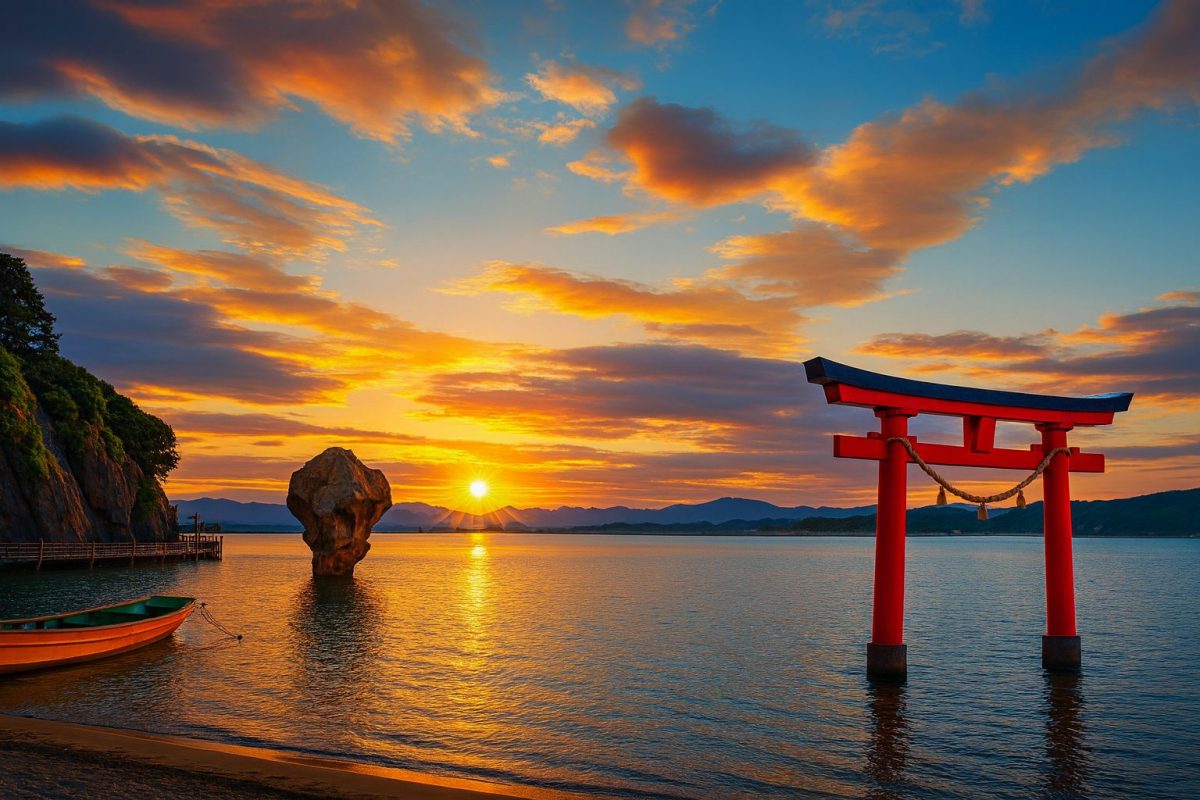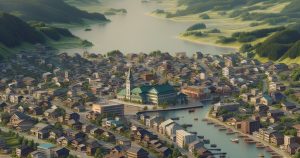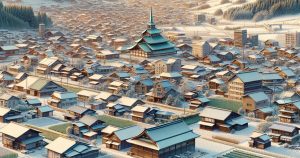| population | 6,437 peoples |
|---|---|
| area | 109.48 km² |
| population density | 58.8 peoples/km² |
Located on the Sea of Japan coast in southwestern Hokkaido, Esashi Town (Esashi-chō) serves as the administrative center of the Hiyama Subprefecture. This historic port town flourished during the Edo period as a major stop for the Kitamae-bune trading ships and was once described as “Esashi’s May rivals even Edo.” In the late 19th century, it became one of the key battle sites of the Hakodate War, where the battleship Kaiyō-maru famously sank offshore. Today, Esashi’s economy thrives on fishing and tourism. The bounty of the sea continues to enrich local cuisine, while its preserved Edo-period streets, traditional festivals, and scenic coastal landscapes make it a cultural treasure of Hokkaido. Visitors can stroll through the nostalgic “Inishie Street,” relax by the sea breeze, or explore nature through hiking, fishing, and seasonal outdoor activities like skiing and snowshoeing. Esashi offers a deep connection to history, nature, and the warmth of its people.
Culture and Traditions
Esashi is one of the oldest developed areas in Hokkaido, where traditional lifestyles and culture still flourish. During the Edo period, the town prospered as a trading hub for Kitamae-bune ships, and this maritime heritage lives on in the town’s famous folk song, the Esashi Oiwake. The song, often referred to as the “soul of Hokkaido,” is celebrated each September at the national Esashi Oiwake Festival, attracting performers from across Japan.
Another major event is the Ubakami Shrine Festival, held every August and recognized as one of Hokkaido’s oldest and most magnificent festivals. Lavish floats adorned with traditional figures parade through the streets, filling the town with music and celebration.
Locals speak a unique dialect known as “Esashi-ben,” a soft-sounding language influenced by both Ainu and classical Japanese. The town’s “Inishie Street” retains the charm of its merchant-town days, featuring renovated wooden buildings now housing cafes, shops, and galleries. Esashi’s culture harmonizes tradition with creativity, creating an atmosphere that warmly welcomes visitors from around the world.
Local Specialties
- Esashi Kelp (Konbu): Grown in nutrient-rich waters where warm and cold currents meet, Esashi kelp is renowned for its soft texture and deep umami flavor. It is prized by chefs throughout Japan for making high-quality dashi broth.
- Scallops: Harvested from the cold, clear waters off Esashi, these scallops are large, sweet, and tender. They are served fresh as sashimi or grilled in local seafood markets.
- Esashi Green Onion Bun: A local confection made with fragrant Esashi green onions, wrapped in mildly sweet dough. It’s a unique snack that captures the town’s playful culinary creativity.
- Hinoki-Asunaro Honey: A rare honey made from the blossoms of the native Japanese cypress (Hinoki Asunaro). Its refreshing aroma and smooth sweetness make it a coveted local delicacy.
- Herring Products: Once the backbone of Esashi’s prosperity, herring remains a symbol of the town. Dried and sweetly simmered herring products are popular souvenirs and traditional dishes.
Annual Events
- Ubakami Shrine Festival (August): The oldest festival in Hokkaido, featuring 13 richly decorated floats that parade through the streets at night under glowing lanterns — a spectacular celebration of faith and tradition.
- Kamome Island Festival (July): A summer celebration held around Kamome Island, offering beach activities, stage performances, and fireworks by the sea.
- Esashi Oiwake National Contest (September): A major folk music competition where singers from across Japan gather at the Esashi Oiwake Museum to perform the town’s iconic melody.
- Spring Inishie Dream Festival (May): A spring event centered along Inishie Street featuring parades, live performances, and local food stalls that celebrate Esashi’s history and rebirth.
- Esashi Winter Festival (February): A cozy winter event with snow lanterns, local food booths, and beautiful illuminations brightening the snowy streets.
Access
- By Air: Hakodate Airport is the nearest airport. From there, it takes about 1.5 hours by car or bus to reach Esashi.
- By Train: From Shin-Hakodate-Hokuto Station, take a bus or rental car to Esashi (approx. 2 hours). Note that the Esashi Line was discontinued in 2014.
- By Bus: Buses from Hakodate Station to Esashi take about 2.5 hours via the Hakodate Bus Company.
- By Ferry: Esashi Port offers Heartland Ferry service to Okushiri Island.
- By Car: From Sapporo, drive via the Dōō Expressway and National Routes 5 and 227 (approx. 5.5 hours). From Hakodate, follow Route 228 (approx. 2 hours).
Tourist Attractions
- Inishie Street – A picturesque historic district lined with Edo-era merchant houses, now hosting cafes, boutiques, and souvenir shops.
- Kamome Island – A small island off Esashi Port featuring scenic walking trails, a beach, a campsite, and a panoramic view of the Japan Sea sunset.
- Kaiyo Maru Memorial Museum – A full-scale replica of the Edo-period battleship Kaiyo-maru, exhibiting artifacts from the Boshin War and Esashi’s maritime heritage.
- Ubakami Shrine – Believed to be founded in 1216, it is Hokkaido’s oldest shrine, famous for its grand summer procession of floats.
- Former Nakamura Residence – A nationally designated Important Cultural Property showcasing the architectural style of a prosperous Edo-period merchant family.








